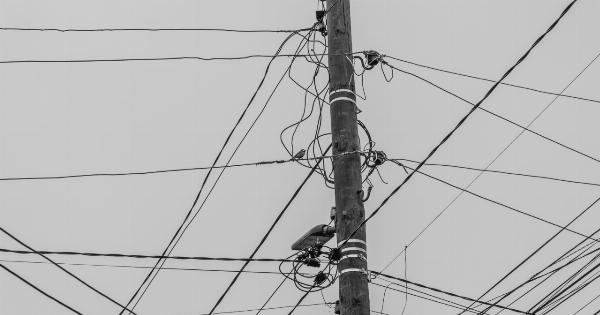Warts are a common skin condition that can affect individuals of all ages. They are caused by the human papillomavirus (HPV) and can appear on different parts of the body.
Spotting warts early on is essential for effective treatment and preventing their spread. In this article, we will discuss how to identify warts on your body and provide useful tips for managing this condition.
What are Warts?
Warts are small growths on the skin that are caused by a viral infection. The most common type of wart is called a common wart, which typically appears on the hands, fingers, or around the nails.
Other types of warts include plantar warts (on the soles of the feet), flat warts (on the face, arms, or legs), and genital warts (in the genital area).
10 Signs of Warts
Identifying warts can be relatively easy if you know what to look for. Here are ten signs that can help you spot warts on your body:.
#1 Raised or Rough Surface
Warts often have a raised or rough surface that distinguishes them from the surrounding skin. They may appear like small cauliflowers or have a grainy texture.
#2 Small, Dome-shaped Bumps
Most warts are small, round or oval bumps that protrude from the skin. They can range in size from a few millimeters to a centimeter or more.
#3 Gray, Brown, or Flesh-colored
Warts can have various colors, including gray, brown, or flesh-colored. In some cases, they may also have tiny black dots, which are actually clotted blood vessels.
#4 Clustered Appearance
Warts can appear individually or in clusters. If you notice multiple bumps in the same area, it may indicate the presence of warts.
#5 Pain or Discomfort
While warts are generally painless, they can cause discomfort or pain if they appear on weight-bearing areas, like the feet. This is common with plantar warts.
#6 Thickened Skin
In some cases, warts can cause the overlying skin to become thickened. This may be more evident with plantar warts, where the affected area may have a callus-like appearance.
#7 Resilient to Home Treatments
If you have tried various home remedies to get rid of a skin growth without success, it is more likely to be a wart. Warts are known to be resilient and often require professional treatment.
#8 Contagious Nature
Warts are highly contagious and can spread through direct contact with an infected person or contaminated surfaces. If you notice new bumps appearing after coming into contact with warts, it is a strong indication of this condition.
#9 Common Areas of Occurrence
Warts tend to appear in specific areas of the body. Common warts often occur on the hands, fingers, and around the nails. Plantar warts are found on the soles of the feet, while flat warts may appear on the face, arms, or legs.
Genital warts, as the name suggests, occur in the genital area.
#10 Persistence and Recurrence
Warts can often persist for an extended period and have a tendency to recur even after treatment. If you have a stubborn bump that keeps coming back, it is likely a wart.
Managing and Treating Warts
If you have identified warts on your body, it is important to manage and treat them appropriately. Here are some effective strategies:.
#1 Professional Medical Consultation
While minor warts may disappear without any treatment, it is advisable to consult a healthcare professional for an accurate diagnosis and appropriate treatment options.
#2 Over-the-counter Remedies
There are various over-the-counter remedies available that can help in treating warts. These include medicated creams, gels, and adhesive patches that contain salicylic acid, which can gradually dissolve the wart.
#3 Cryotherapy
Cryotherapy involves freezing the wart with liquid nitrogen. This treatment method helps destroy the wart tissue by causing it to freeze and fall off. Multiple sessions may be required for complete removal.
#4 Electrosurgery
Electrosurgery involves burning off the wart using an electrical current. This procedure should only be performed by a healthcare professional and may require local anesthesia.
#5 Laser Treatment
Laser treatment is an effective option for stubborn warts. It uses focused laser beams to destroy the wart tissue without causing significant damage to the surrounding skin.
#6 Immunotherapy
In some cases, immunotherapy may be recommended to boost the body’s immune response against warts. This approach involves injecting a substance into the wart to stimulate an immune reaction and destroy the wart.
#7 Surgical Removal
For large or persistent warts, surgical removal may be necessary. This procedure involves cutting or scraping off the wart under local anesthesia. Stitches may be required depending on the size and location of the wart.
#8 Avoiding Scratching or Picking
It is important to avoid scratching or picking at warts, as this can cause them to spread or lead to infection. Keep the area clean and covered if needed.
#9 Good Hygiene Practices
Practicing good hygiene, such as regular handwashing, can help prevent the spread of warts. Avoid sharing personal items like towels or razors with someone who has warts.
#10 Boosting Immune System
A strong immune system can greatly reduce the chances of developing warts or help in fighting off the existing ones. Maintain a healthy lifestyle with a balanced diet, regular exercise, and enough sleep to keep your immune system strong.
Conclusion
Spotting warts on your body is crucial for timely intervention and proper treatment. By being aware of the signs and symptoms of warts, you can take appropriate measures to manage this common skin condition.
Remember, if you are unsure about any skin growth, consult a healthcare professional for an accurate diagnosis.





























